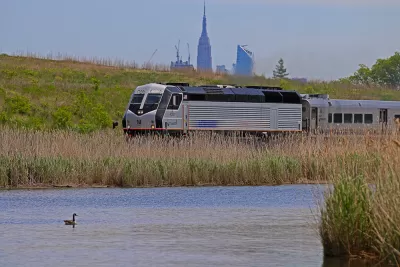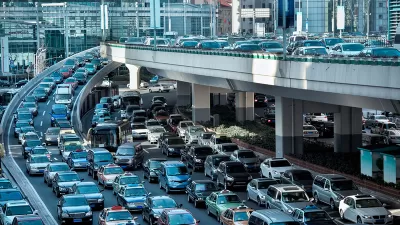Shifting commute patterns and the popularity of remote work could pose an existential threat to the New York City region's commuter rail services.

As reported by Matthew Haag and Patrick McGeehan, New York City's commuter rail services are continuing to experience drastically reduced ridership as the five-day office workweek seems increasingly obsolete. "In 2019, the regional transit agencies collectively carried more than 500 million passengers across the New York area, but ridership in 2021 declined by more than half of that prepandemic level." According to the MTA, the agency collected only $49 million in fares in 2021, down from $346 million in 2019.
The authors note that sales of monthly passes on commuter rail are down by 75 percent, leading to a dramatic drop in revenue despite optimistic projections from transit agencies. "Even as transit officials insist that the commuter railroads will start bouncing back in notable numbers this year, the agency is also acknowledging that the pandemic is more and more likely to lead to permanent changes in the region’s commuting pattern."
The agency has approved discounted passes to incentivize riders, but many former commuters show little interest in returning to hours-long commutes and passes that cost upward of $300. The article quotes Phil Pescatore, chief ethics officer at Guardian Life Insurance Company of America, who used to commute into the city from New Jersey. "'It’s been found time, and I have repurposed that time,' Mr. Pescatore said. 'I do things that I hadn’t had a chance to do: a bit more exercise in the morning, and the ability to think and plan a little bit more.'"
FULL STORY: How Remote Work Is Devastating New York City’s Commuter Rails

Study: Maui’s Plan to Convert Vacation Rentals to Long-Term Housing Could Cause Nearly $1 Billion Economic Loss
The plan would reduce visitor accommodation by 25,% resulting in 1,900 jobs lost.

North Texas Transit Leaders Tout Benefits of TOD for Growing Region
At a summit focused on transit-oriented development, policymakers discussed how North Texas’ expanded light rail system can serve as a tool for economic growth.

Using Old Oil and Gas Wells for Green Energy Storage
Penn State researchers have found that repurposing abandoned oil and gas wells for geothermal-assisted compressed-air energy storage can boost efficiency, reduce environmental risks, and support clean energy and job transitions.

Santa Barbara Could Build Housing on County Land
County supervisors moved forward a proposal to build workforce housing on two county-owned parcels.

San Mateo Formally Opposes Freeway Project
The city council will send a letter to Caltrans urging the agency to reconsider a plan to expand the 101 through the city of San Mateo.

A Bronx Community Fights to Have its Voice Heard
After organizing and giving input for decades, the community around the Kingsbridge Armory might actually see it redeveloped — and they want to continue to have a say in how it goes.
Urban Design for Planners 1: Software Tools
This six-course series explores essential urban design concepts using open source software and equips planners with the tools they need to participate fully in the urban design process.
Planning for Universal Design
Learn the tools for implementing Universal Design in planning regulations.
Ascent Environmental
Borough of Carlisle
Institute for Housing and Urban Development Studies (IHS)
City of Grandview
Harvard GSD Executive Education
Toledo-Lucas County Plan Commissions
Salt Lake City
NYU Wagner Graduate School of Public Service




























